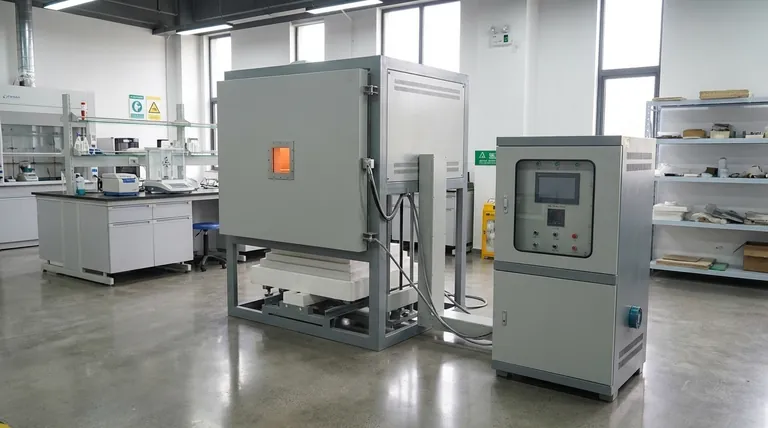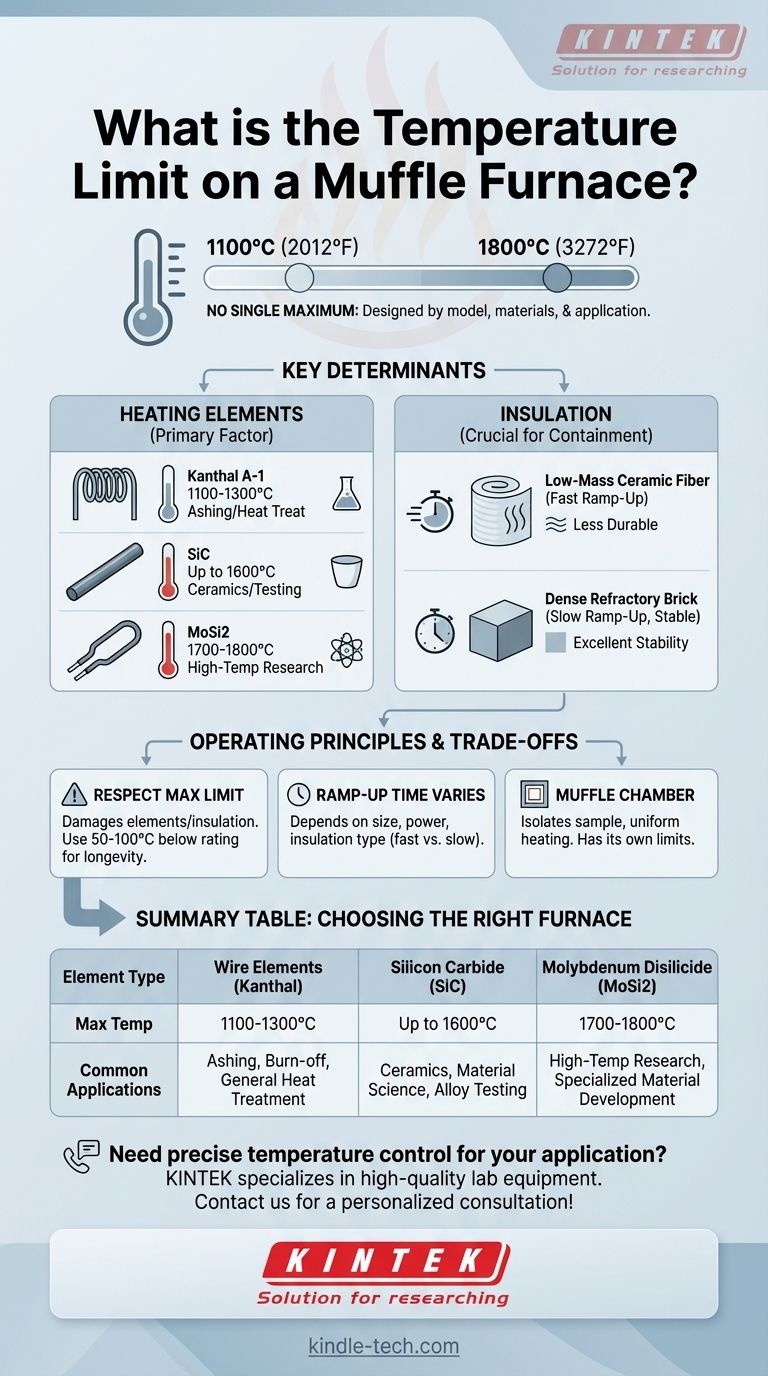马弗炉没有单一的最高温度。 温度限制完全取决于特定型号的设计、材料和预期用途。市售马弗炉的最高工作温度通常范围从 1100°C (2012°F) 到高达 1800°C (3272°F)。
关键要点是,马弗炉的温度限制不是一个通用值,而是一个特定的工程约束。该限制由其加热元件和热绝缘材料的材料决定,超过此限制将导致永久性损坏。
什么决定了马弗炉的温度限制?
最高温度范围很广,是因为炉子是为不同目的、使用不同技术制造的。定义此限制的两个最关键部件是加热元件和绝缘材料。
加热元件的作用
用于电加热元件的材料是限制炉子最高温度的主要因素。不同材料在降解或失效之前具有不同的最高使用温度。
-
丝状元件(例如 Kanthal A-1): 常用于通用实验室炉,这些铁铬铝合金坚固且经济高效,通常可达到 1100°C 至 1300°C 的最高温度。
-
碳化硅 (SiC): 对于材料测试和小型陶瓷等高温应用,使用 SiC 棒。这些允许高达 1600°C 的工作温度。
-
二硅化钼 (MoSi2): 这些先进的陶瓷元件用于高性能研究应用炉。它们可以达到最高的温度,通常在 1700°C 至 1800°C 之间。
绝缘材料的重要性
如果炉子不能有效地保持热量,它就无法达到并维持高温。绝缘材料或耐火材料的类型和质量至关重要。
低质量陶瓷纤维绝缘材料可以使炉子非常快速地升温(有时只需 20 分钟),但随着时间的推移可能耐久性较差。
更密集的耐火砖绝缘材料具有更高的热质量,这意味着它可能需要数小时才能达到最高温度。然而,它通常更坚固,并提供出色的温度稳定性。

了解权衡和操作原理
仅仅知道最高温度不足以实现有效和安全的操作。您还必须了解炉子设计的实际意义。
为什么必须遵守额定最高温度
制造商的最高额定温度是绝对限制。尝试在高于此温度下操作炉子将迅速降解加热元件、损坏绝缘材料,并可能造成严重的安全隐患。
在绝对最高温度下连续运行也会缩短炉子组件的使用寿命。为了延长使用寿命,最好使用额定温度比您常规工作温度高出至少 50°C-100°C 的炉子。
升温时间并非通用
炉子达到目标温度所需的时间取决于其尺寸、功率和绝缘材料类型。
小型、低质量的实验室炉可能升温很快,而使用致密耐火砖的大型生产炉则需要更长的时间。“升温”时间是规划工作时需要考虑的关键因素。
马弗腔本身
“马弗”一词指的是将样品与加热元件的直接辐射隔离的内腔。这种设计可以保护样品免受污染并提供更均匀的加热。该腔室的材料也具有其自身的温度限制,这有助于炉子的整体额定值。
为您的应用做出正确的选择
要选择正确的炉子,您必须将它的能力与您的具体需求相匹配。
- 如果您的主要重点是灰化、烧除或热处理常见金属(低于 1200°C): 带有 Kanthal 丝状元件的标准炉是最实用和经济的选择。
- 如果您的主要重点是陶瓷、材料科学或合金测试(1200°C - 1600°C): 您需要配备碳化硅 (SiC) 加热元件的更专业化的炉子。
- 如果您的主要重点是高温研究或专业材料开发(高于 1600°C): 您唯一的选择是使用二硅化钼 (MoSi2) 元件和先进绝缘材料的高性能型号。
最终,炉子的官方规格表是其操作限制的唯一权威来源。
摘要表:
| 加热元件类型 | 典型最高温度 | 常见应用 |
|---|---|---|
| 丝状元件 (Kanthal) | 1100°C - 1300°C | 灰化、烧除、一般热处理 |
| 碳化硅 (SiC) | 高达 1600°C | 陶瓷、材料科学、合金测试 |
| 二硅化钼 (MoSi2) | 1700°C - 1800°C | 高温研究、专业材料开发 |
需要一个完全符合您应用温度要求的马弗炉?
KINTEK 专注于提供高质量的实验室设备和耗材。我们的专家可以帮助您选择合适的炉子——从经济高效的标准型号到高性能的研究单元——确保您的实验室实现精确的温度控制、安全性和耐用性。
立即联系我们 获得个性化咨询,并获得满足您特定需求的正确设备!
图解指南




















